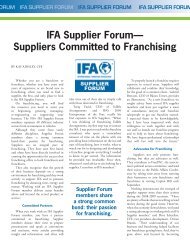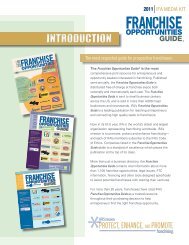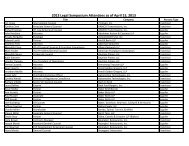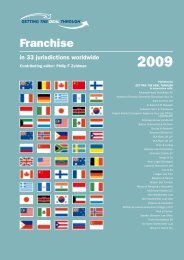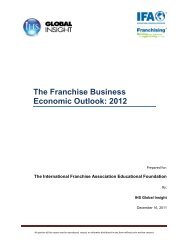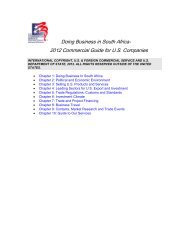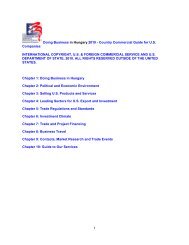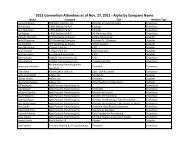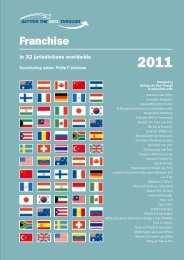Doing Business in Saudi Arabia - International Franchise Association
Doing Business in Saudi Arabia - International Franchise Association
Doing Business in Saudi Arabia - International Franchise Association
You also want an ePaper? Increase the reach of your titles
YUMPU automatically turns print PDFs into web optimized ePapers that Google loves.
Electrical Power Systems – ELP<br />
Overview Return to top<br />
Power demand is ris<strong>in</strong>g rapidly <strong>in</strong> the world’s top oil exporter of more than 24 million people, as<br />
oil revenues fuel economic expansion <strong>in</strong> the vast desert state. Accord<strong>in</strong>g to experts Power<br />
generation capacity <strong>in</strong> the k<strong>in</strong>gdom needs to grow threefold over the next 25 years to meet<br />
future demand. Capacity needs to rise to 115,000 megawatts <strong>in</strong> 2032, from current capacity or<br />
around 35,000 megawatts. <strong>Saudi</strong> <strong>Arabia</strong> has embarked on a program to boost the k<strong>in</strong>gdom’s<br />
electricity generat<strong>in</strong>g capacity, with a huge program to build new power plants and expand<br />
exist<strong>in</strong>g ones.<br />
Annual growth <strong>in</strong> demand is runn<strong>in</strong>g at up to 8 per cent and the k<strong>in</strong>gdom’s power sector<br />
regulator, the Electricity & Cogeneration Regulatory Authority (ECRA), says an additional<br />
35,000MW will be required over the next 10 years to meet projected demand and to build up<br />
reserves of 15 per cent of generat<strong>in</strong>g capacity. This will require capital expenditure of $53<br />
billion.<br />
<strong>Saudi</strong> Electricity Company (SEC) is <strong>in</strong> the front l<strong>in</strong>e <strong>in</strong> the government’s efforts to build power<br />
capacity as quickly as possible, and the long-mooted move to break the company down <strong>in</strong>to its<br />
constituent parts is now imm<strong>in</strong>ent.<br />
<strong>Saudi</strong> <strong>Arabia</strong> plans to encourage the private f<strong>in</strong>anc<strong>in</strong>g of future power plants, but state-run SEC<br />
rema<strong>in</strong>s at the heart of the government’s efforts both to expand generat<strong>in</strong>g capacity and<br />
liberalize the power sector. SEC currently owns power plants generat<strong>in</strong>g more than 84 per cent<br />
of the k<strong>in</strong>gdom’s electricity.<br />
Currently, the SEC owns 49 generat<strong>in</strong>g plants around the country and generated 30,670MW of<br />
power <strong>in</strong> 2007. Formed <strong>in</strong> 2000 follow<strong>in</strong>g a royal decree that merged Consolidated Electrical<br />
Companies and the projects of the Electricity Corporation <strong>in</strong>to one company, more than a<br />
quarter of SEC was subsequently sold off and the company is now owned 74 per cent by the<br />
government, 7 per cent by <strong>Saudi</strong> Aramco and 19 per cent by the <strong>Saudi</strong> public. It is listed on the<br />
<strong>Saudi</strong> stock exchange (Tadawul).<br />
Such is the SEC’s size that it has a virtual monopoly <strong>in</strong> generation, transmission and distribution<br />
with<strong>in</strong> <strong>Saudi</strong> <strong>Arabia</strong>, and is one of the largest corporations <strong>in</strong> the country. It is by far the largest<br />
utility provider <strong>in</strong> the Gulf.<br />
Best Products/Services Return to top<br />
In September 2009, SEC released its own forward projects plan, which details its work program<br />
up until 2023. Between 2010 and 2018, the company <strong>in</strong>tends to issue 33 tenders for new or<br />
expanded power plants, which will add a total capacity of 21,065MW to its current load. It is a<br />
huge program, cover<strong>in</strong>g all regions of the country, but <strong>in</strong>itially concentrat<strong>in</strong>g on the northwest.<br />
The first projects – expansions of the Tabuk, Al-Wajh and Tabarjal power plants – are expected<br />
to come on l<strong>in</strong>e <strong>in</strong> 2012, with additional capacity at Rabigh and Duba com<strong>in</strong>g on l<strong>in</strong>e soon after.





